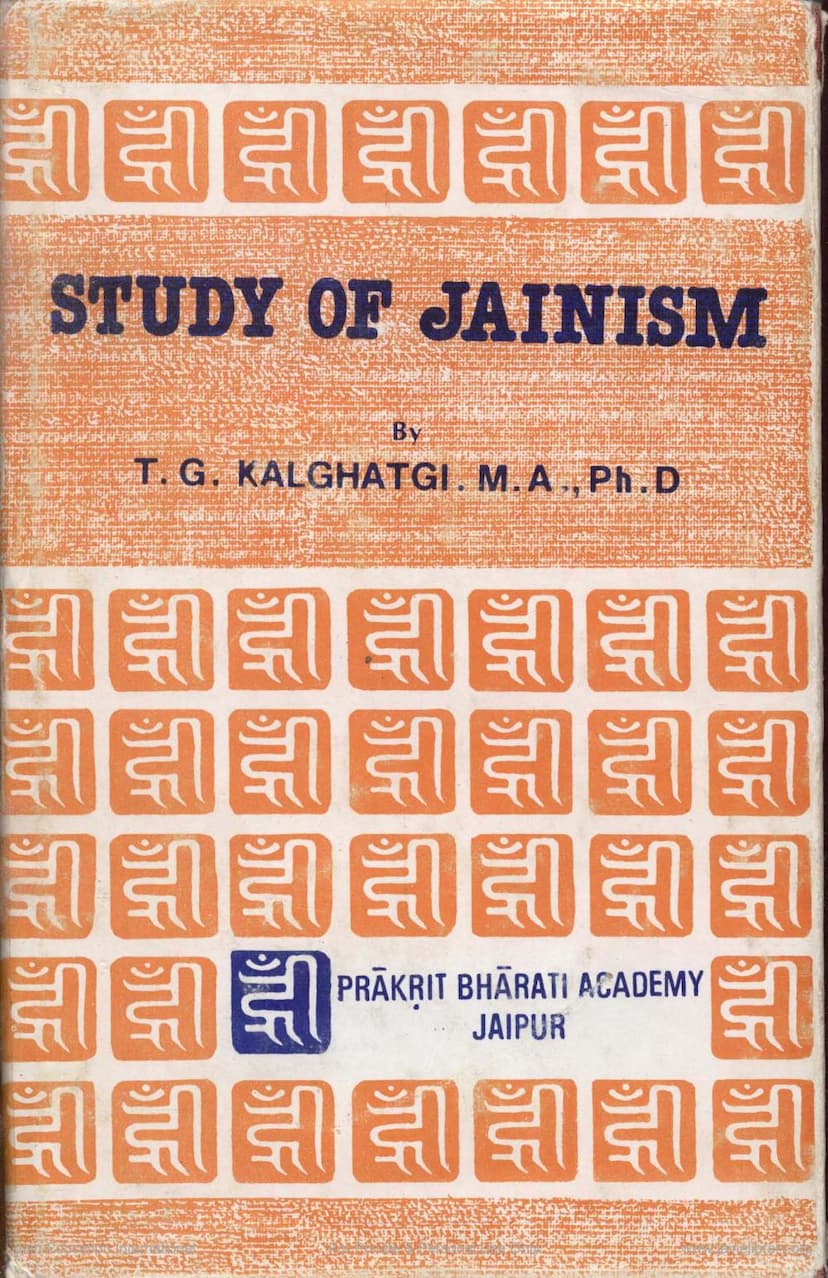Study Of Jainism
Added to library: September 2, 2025

Summary
This book, "Study of Jainism" by T. G. Kalghatgi, offers a comprehensive exploration of the Jain religion and philosophy. Published by Prakrit Bharti Academy, Jaipur, it is structured into two main parts.
Part I: Jaina Religion: Its Beginnings and Development
This section focuses on the historical and developmental aspects of Jainism.
- Jainism as a Pre-Aryan Religion: The book establishes Jainism's antiquity, positing it as a pre-Aryan religion that predates the arrival of Vedic Aryans in India. It highlights the assimilation of Sramana thought, which emphasized concepts like moksha, karma, and sanyasa, into Vedic culture.
- The Tirthankaras: The text introduces the concept of Tirthankaras as perfected souls who guide humanity. It details the lives and teachings of:
- Rishabhadeva: The first Tirthankara of this eon, credited with establishing social structures, introducing agriculture, arts, and sciences, and ordaining the first kingdom. The book delves into the auspicious dreams associated with his birth, the psychological significance of dreams in ancient Indian traditions, and his eventual renunciation and attainment of omniscience.
- Other Tirthankaras: It briefly covers the roles of other Tirthankaras in elaborating Rishabhadeva's teachings.
- Ariṣṭanemi (Neminatha): The 22nd Tirthankara, whose life is linked to the Mahabharata era and Lord Krishna. His historicity is discussed, along with his renunciation triggered by witnessing animal sacrifice for a feast.
- Parshvanatha: The 23rd Tirthankara, whose historicity is established. He preached the "Caturyama Dharma" (four-fold vows). The book explores the symbolic narratives of his life, particularly the conflict between good and evil, and the protection offered by Dharanendra and Padmavati.
- Vardhamana Mahavira: The 24th and last Tirthankara, presented as a historical figure of the 6th century BC. His life, teachings, and the socio-intellectual milieu of his time are discussed, including the philosophical chaos, the resurgence of Vedic ritualism, and the caste system. The book details Mahavira's rigorous penance, his emphasis on equality, and his eventual attainment of omniscience. It also highlights the significant parallels and differences between Mahavira's and Buddha's lives and teachings.
Part II: Philosophy of Jainism
This section delves into the philosophical and doctrinal aspects of Jainism.
- Jaina Logic and Epistemology: The book explains the triple path to self-realization: right understanding (Samyagdarśana), right knowledge (Samyagjñana), and right conduct (Samyagcaritra). It details the eight characteristics of right understanding and discusses the psychological significance of these principles. The core Jaina philosophical outlook of Anekanta (non-absolutism) is presented as a fundamental principle, emphasizing the complex nature of reality and the importance of multiple perspectives. Nayavada (the theory of standpoints) and Syadvada (the theory of conditioned predication) are analyzed as the logical and epistemological frameworks derived from Anekanta. The book also explores the Jaina theory of knowledge, including different types of knowledge like Matijñana, Srutajñana, Avadhijñana, Manahparyayajñana, and Kevalajñana, and their psychological and philosophical implications.
- Jaina Philosophy: This chapter outlines the metaphysical structure of Jainism, presenting the seven fundamental principles (Tattvas) and the six substances (Dravyas). It elaborates on the nature of Jiva (soul) and Ajiva (non-living matter), the concept of Karma, and the processes of Asrava (influx of karma), Bandha (bondage), Samvara (stoppage of influx), Nirjara (removal of karma), and Moksha (liberation). The book emphasizes Jainism's realistic and pluralistic approach to reality, where identity and difference, the one and the many, are considered equally real.
- Doctrine of Karma: This chapter provides an in-depth analysis of the Jaina doctrine of karma, viewing it as a scientific and realistic explanation for the inequalities and suffering in life. It details the physical and psychic aspects of karma, its eight types, and the processes through which it operates. The book discusses the concepts of Bandha, Samvara, Nirjara, and Moksha as stages in the soul's journey towards liberation from karmic bondage.
- Jaina Ethics: This section focuses on the ethical framework of Jainism, emphasizing the Tirthankaras' teachings as the supreme ethic for spiritual perfection. It distinguishes between the rigorous ascetic path (Muni-dharma) and the path for householders (Sravaka-dharma). The book details the five great vows (Mahavratas) and the lesser vows (Anuvratas), with a particular focus on Ahimsa (non-violence) as the cardinal principle. It explores the nuances of Ahimsa, its positive and negative aspects, and its application in social situations, including the concept of aticaras (infractions of vows). The ethical significance of other vows like Satya (truth), Asteya (non-stealing), Brahmacharya (celibacy), and Aparigraha (non-possession) is also discussed, highlighting their role in personal and social development.
The book concludes with epilogues that summarize key Jaina principles and the spirit of tolerance and inclusivity (Sarvodaya) within Jainism. It also includes a comprehensive terminology section and an index of concepts discussed. The author, T. G. Kalghatgi, is presented as an eminent scholar with extensive experience in Jainology and Indian Philosophy.